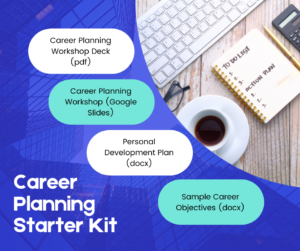Introduction
Building a strong startup team is crucial for success especially early on the journey. Start strong by defining roles, setting expectations, and hiring for cultural fit.
Hire people who are passionate, motivated, and share your vision. Foster a culture of collaboration and communication.
Key Executive Roles in a Startup Team
- CEO - vision and strategy.
- CTO + CPO - technical expertise and product development.
- CFO - financial management and fundraising.
Other Important Roles in a Startup Team
Product Manager: Oversees the development and management of the software product, ensuring it meets user needs and aligns with the company's goals.
Software Engineer: Writes the code and builds the software product, working closely with the product manager to ensure it meets specifications and requirements. Also manages the deployment, integration, and continuous improvement of the software product, ensuring smooth operations and reduced downtime.
Product Designer: Designs the user interface and user experience to ensure the software is user-friendly, visually appealing, and easy to navigate.
Sales and Business Development: Focuses on acquiring customers, generating revenue, and building strategic partnerships to grow the business. Develops and executes marketing strategies to promote the software
Customer Success Manager: Ensures customer satisfaction by addressing user concerns, providing technical assistance, and gathering feedback to improve the product.
People Ops / HR Manager: Manages recruitment, hiring, onboarding, and employee relations to build a strong, motivated team.
The Importance of Hiring for Team Fit
Building a startup team with diverse skills, backgrounds, and perspectives is crucial for success. Hire for team fit to foster teamwork and create a positive team culture.
Hiring Tips for a Startup Team
- Hire for culture fit as well as skills.
- Look for people who are passionate about your company's mission.
- Consider hiring freelancers or contractors before making full-time offers.
- A diverse team brings a wealth of different perspectives and ideas, leading to more innovation and success in achieving your startup's goals.
Best practices: Hiring process for a Startup
Company Overview
When hiring for a startup, you want to look for candidates who are flexible, adaptable, and able to work in a fast-paced environment. Consider team fit as well as skillset.
To that end, provide a good company overview and be transparent with your requirements.
What roles do you need?
- Identify the open positions and create job descriptions.
- Post the job openings on relevant job boards and social media channels.
- Screen resumes and conduct initial interviews with potential candidates.
Application process
- Structure the application process to align with what's important for the startup.
Initial screening
- Screen resumes for relevant experience, skills, and education. Look for clear and concise formatting, and follow up with qualified candidates.
Skills assessment
- To assess candidates' skills, conduct initial phone screenings, in-person interviews, and skills-based assessments. Be clear about job requirements.
Final interview
- In the final interview, assess the candidate's enthusiasm, confidence, and team fit. Give them a chance to ask thoughtful questions.
Offer & onboarding
- Before onboarding, create a new hire checklist to ensure a smooth transition. Communicate company culture, expectations, and goals clearly.
Onboarding process
- Provide a welcome letter with important details about their position.
- Include an employee handbook and company policies.
- Prepare a list of training sessions and meetings they will need to attend.
- Company policies and procedures manual.
- Computer, monitor, keyboard, mouse, and other hardware & software access.
- Office supplies where applicable.
Expectations and goals
- Make sure to introduce new hires to company culture and ways of working, provide necessary equipment and training, set clear expectations, and establish goals.
Introduction to team members
- Create a welcome package with a personalized note, company swag, and a team directory. Offer a tour of the office and schedule an introductory meeting.
Training and development opportunities
- Provide a clear career growth plan outlining skills to learn and opportunities for advancement. Offer regular training and mentorship.
